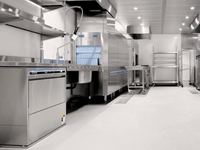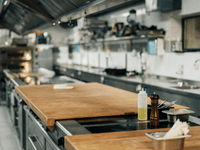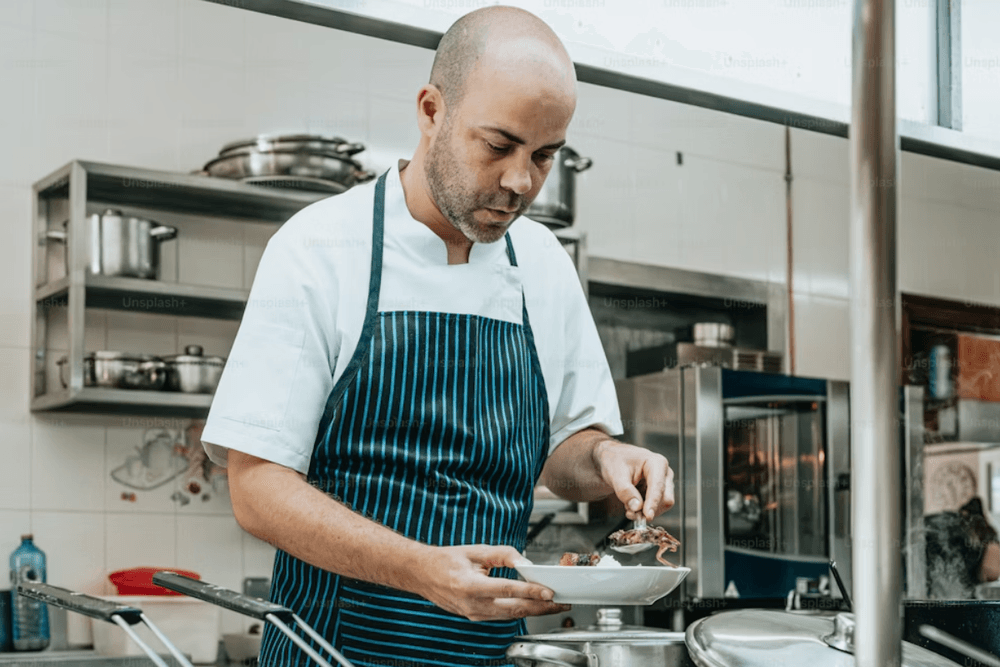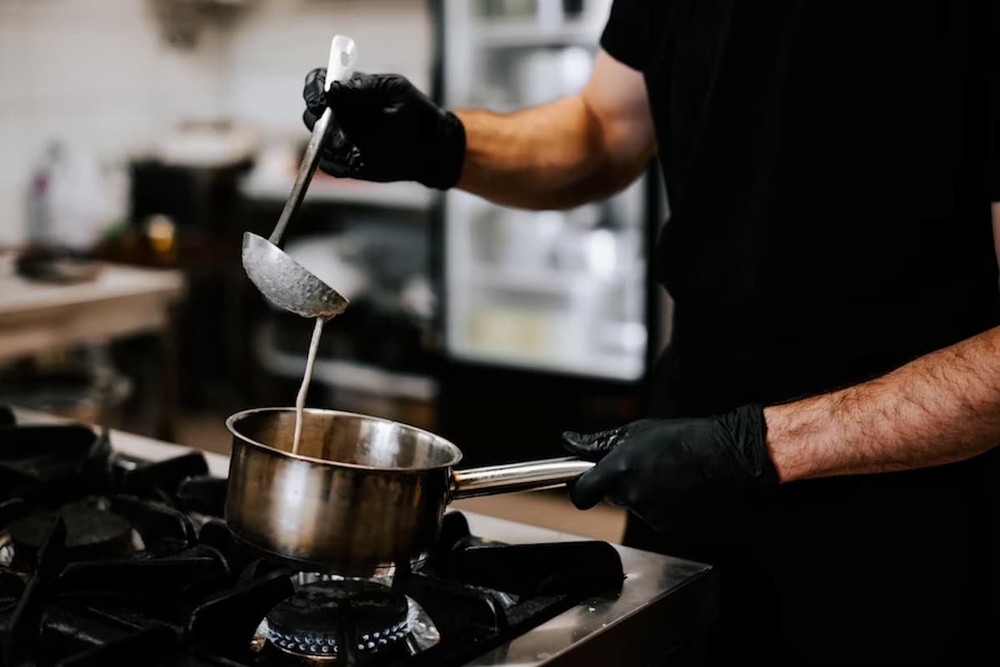How to Secure a Commercial Kitchen Lease Without the Hassle
Table of Contents
CloudKitchens
How many tacos can be delivered from a 1000sqft restaurant?
The same amount as a 200sqft ghost kitchen.
Food businesses across the U.S. are launching faster, cutting costs, and scaling delivery with ready-to-use ghost kitchens built for efficiency.
Leasing a commercial kitchen is becoming an increasingly popular strategy among food industry entrepreneurs in the United States. Whether for delivery, catering, or wholesale, this approach offers a more practical way to start a food business startup without the effort and costs of building a kitchen from scratch.
However, today’s commercial kitchen rental process is full of red tape that often complicates life for restaurants and other food businesses trying to streamline their operations and start selling as soon as possible. Because of this, it is essential to find ways to make the process more efficient.
This guide will walk you through how to secure a commissary kitchen lease without the headaches, explaining how the process generally works and showing how entrepreneurs can overcome common challenges to act faster.
Read more: Mastering restaurant management: how to increase profitability and streamline operations
The Real Cost of Leasing a Commercial Kitchen
Leasing a commercial kitchen is a natural path for those wanting to open a restaurant, launch a delivery service, or expand a food business. But in reality, the process tends to be much more complex than it looks at first glance.
Here are the main challenges faced by those opting for the traditional shared kitchen for rent model.
- Licenses and Bureaucracy
Before even turning on the oven, you must navigate various legal requirements such as permits, health licenses, fire department approvals and more. Each city has its own rules and timelines which can delay operations by months.
- Months of Renovations and Adjustments
Finding a space does not mean it is ready to function as a kitchen. Usually, renovations are needed such as plumbing, electrical work, wall finishes, and ensuring proper ventilation all according to strict commercial kitchen requirements and food safety standards.
- High Upfront Costs
Getting the kitchen ready for use often requires significant investment. Besides renovations, you will need to buy or lease equipment, furniture, and ventilation systems.
Rental prices can vary significantly depending on the facilities offered, location, and length of use.
- Negotiations with the Owner
Traditional leases often require guarantors, high deposits, or complex guarantees. There is also little flexibility, you sign a long-term contract, and if you need to scale up or down your options are limited.
- Incomplete or Outdated Equipment
Even after all that, it is not uncommon to find equipment that does not meet your needs. Old ovens, insufficient refrigerators, or missing essential utensils can lead to extra expenses and headaches.
- Hidden Expenses
Additional maintenance fees, insurance costs, utility bills such as water, electricity, gas, and municipal taxes can all pop up unexpectedly. Often, these costs are not clear from the start causing your budget to blow out before the first order leaves the kitchen.
What You Actually Need in a Commercial Kitchen Space
Choosing a commercial kitchen space goes beyond rental cost or square footage. For food entrepreneurs, it is critical to prioritize elements that directly impact operations and business success. Here are the key points you should consider:
- Strategic Location
Being close to your target market and delivery routes reduces logistics time and costs ensuring orders arrive fresh and on time.
- Adequate Refrigeration
Modern, efficient refrigeration equipment keeps food in optimal condition guaranteeing quality and safety, non-negotiable for any food business.
- Space and Storage Solutions
An organized environment with enough room to store ingredients, packaging, and supplies improves workflow and reduces waste boosting production efficiency.
- Efficient Delivery Logistics
Loading and unloading areas with easy access make delivery faster and less stressful especially for delivery-focused restaurants.
- Reliable Utilities
Stable water, electricity, gas, and internet are basic but essential for uninterrupted kitchen operations and order management systems.
- Contractual and Operational Flexibility
Leases that allow for growth, downsizing, or adjustments based on demand prevent entrepreneurs from being locked into rigid commitments giving peace of mind.
- Guaranteed Regulatory Compliance
Ensuring the kitchen meets health and legal standards helps avoid inspection issues, fines, and operational interruptions.
Read more: Top Strategies to Increase Customer Retention for Your Restaurant or Delivery Service
How to Secure a Commercial Kitchen Lease Without the Hassle
As we have seen, signing a traditional commissary kitchen lease can be slow, costly, and full of surprises. The path from idea to operation can be frustrating, but what if there was a simpler, faster, and more efficient way to get started?
CloudKitchens offers just that: a turnkey solution designed for those who want to launch their business in weeks not months. Here is how this modern ghost kitchen licensing alternative transforms the commercial kitchen rental process step by step:
- Fast, Simplified Onboarding
Unlike traditional leases that can take months to secure, with CloudKitchens you can start operating within a few weeks. The onboarding process is straightforward with support from the first contact through to opening day.
- Help with Licensing and Compliance
CloudKitchens’ team assists with all the paperwork including permits and authorizations ensuring your operation is fully compliant from day one.
- Integrated Technology Management
All your delivery apps connect through a single tablet simplifying order management so you can focus on what matters most, cooking great food and delivering quickly.
- Flexible Lease Terms
CloudKitchens offers flexible contracts for those starting small, testing new markets, or expanding to new areas. No need for long-term commitments or expensive setups that do not fit your current business stage.
Skip the Build-Out Move Into a Ready-to-Go Kitchen
One of the biggest obstacles with traditional leasing is the time and money spent on renovations, electrical, plumbing, wall finishes, exhaust systems, equipment installation, all consume time and budget.
With CloudKitchens, that problem disappears. The kitchens are delivered one hundred percent ready to operate safely, efficiently, and with high quality.
Plus, the kitchens are delivery-optimized from layout to logistical support for order pickups allowing you to run a productive operation from day one with no surprises.
Lease Terms That Flex With Your Growth
A common challenge with commercial kitchen leases is the long-term commitment. What if your business grows? What if demand does not meet expectations? Or what if you want to expand to another neighborhood or city?
CloudKitchens understands these concerns. Their contracts are flexible and scalable. You can start with a single kitchen and expand to new locations even in different cities as your operation grows.
This gives you the freedom to test ideas, validate markets, and grow at your own pace without obstacles or unnecessary risks. It is the perfect model for new brands, food trucks ready to scale, or established chains seeking agility.
Why Food Businesses Are Switching to Ghost Kitchens
In a market where speed and efficiency define success, more and more food entrepreneurs are switching to the ghost kitchen model, also known as virtual or dark kitchens.
According to a Coherent Market Insights report, the global dark kitchen sector was valued at US$ 98 billion in 2025 and is projected to reach US$ 2.915 trillion by 2032. That represents a staggering annual growth rate of 62.3%.
This growth is largely driven by the benefits the model offers those looking to start, scale, or restructure their food business.
- No dining room, wait staff, or decor means much lower startup costs.
- You can start operating in weeks while traditional restaurants take months.
- Integrated technology simplifies managing orders, brands, and delivery channels.
- Fewer employees, lower fixed costs, and less complexity.
- Infrastructure designed for delivery with pickup areas and operational support.
Moreover, profit margins are one of the biggest draws. In the United States, ghost kitchens saw profitability around 15% in 2025, ranging from 10% to 30% depending on location.
By comparison, traditional restaurants often operate with margins of just 3% to 5%. This means ghost kitchens can deliver up to six times the financial return for entrepreneurs.
Get Started With a Commercial Kitchen Today
Partnering with CloudKitchens gives you a simple onboarding process, dedicated support, and immediate access to fully equipped kitchen space for food entrepreneurs in high-demand areas. Our team supports you every step of the way, from licensing to daily operations.
Ready to prepare your food business for the future? Explore the ghost kitchens available through CloudKitchens and schedule a visit to the location nearest you. Discover how easy it is to start and grow with the right setup by your side.
FAQ – Securing a Commercial Kitchen Lease
What should I look for when choosing a commercial kitchen to lease?
Key factors include location, equipment quality, lease terms, compliance with health regulations, and available support services.
How can I avoid common pitfalls in commercial kitchen leasing?
Carefully review lease agreements, understand all costs involved, visit the kitchen in person, and ask about shared usage policies and scheduling.
Is it possible to negotiate lease terms for a commercial kitchen?
Yes, many landlords are open to negotiation on lease length, rent price, and included services, especially if you demonstrate reliability and a solid business plan.
DISCLAIMER: This information is provided for general informational purposes only and the content does not constitute an endorsement. CloudKitchens does not warrant the accuracy or completeness of any information, text, images/graphics, links, or other content contained within the blog content. We recommend that you consult with financial, legal, and business professionals for advice specific to your situation.
More insights & stories
There’s more where that came from.
Get in the know and check out our additional insights




